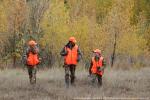Magazine
If you have ever wanted to hunt quail, grouse, deer, wild boar or even black bear, find your way to the mountains of eastern Tennessee. If you’re an experienced hunter looking for new challenges, Appalachia Adventures is for you.
Farmers going back to the future for natural planting techniques.
Some Seedy History
Agriculture in the early American reaches of Appalachia kept families alive. They grew what they could, hunted when they could and gathered whatever they could find. No matter what they planted — tomatoes, corn, beans or beets — they always saved some seeds for replanting the following year. It was the only way to maintain a crop year after year.
“Arsh potatoes” is what you might hear an old-timer in the Appalachians refer to when talking about Irish, or white, potatoes. Arsh potatoes are different from sweet potatoes, which also are quite fondly eaten in the Southern Appalachian Mountains.
Roots of Ancestry
- ‹ previous
- 12 of 21
- next ›








